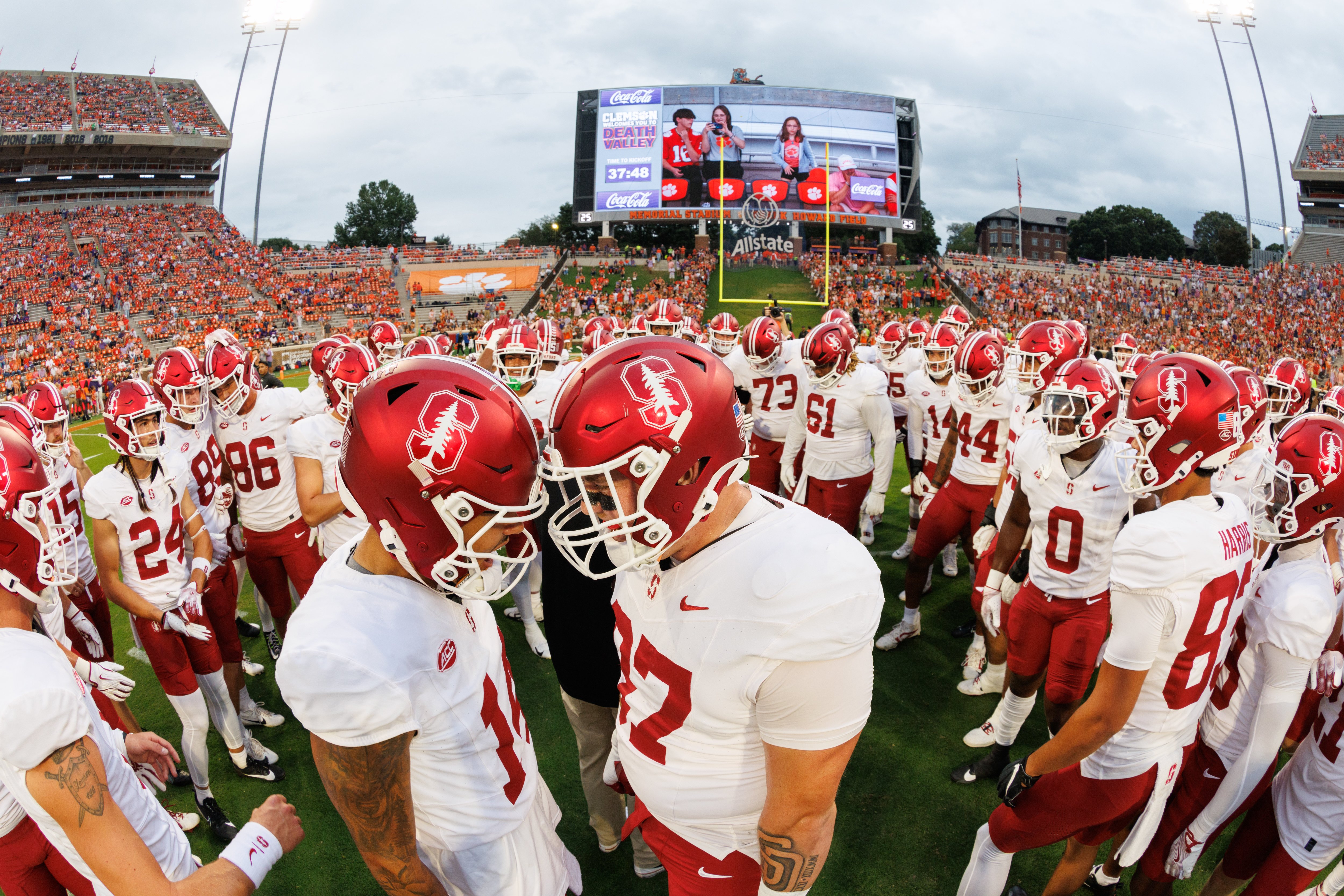As most of the Stanford community was peacefully asleep in the very early hours of Saturday morning on Oct. 5, thousands of Cal fans were rallying at Memorial Glade in anticipation of the first-ever appearance of ESPN’s College GameDay at UC Berkeley.
The show came and went, but the excitement among Cal fans lingered all day as they awaited the evening game against the Miami Hurricanes. There was jubilation in Berkeley, which was made abundantly clear when a sellout crowd of 52,428 packed the stands at California Memorial Stadium just to watch their team lose in heartbreaking fashion — sorry, not sorry Cal fans.
Nonetheless, the aura surrounding Cal football that day was commendable. The electric scenes captured throughout the day were trending across social media platforms. Stanford football, however, was getting no love on social media that day.
“I’m not sure ACC fever has reached the West Coast,” Andy Bitter, a staff writer for The Athletic covering Virginia Tech football wrote on X — an image of an embarrassingly sparse crowd at Stanford’s most recent home game against the Hokies served as evidence for Bitter’s statement.
The writer’s observation will get no pushback from most Stanford fans, but before the ACC transition, there had not been PAC-12 fever for Cardinal football in almost a decade. In 2013, Stanford stadium was sold out as around 50,000 fans packed the stands for every home game. Throughout the 2010s, fans religiously attended home games to root on the Stanford athletes, including now NFL star Christian McCaffrey. But just like McCaffrey, the fever has come and gone.
Former Stanford Head Coach David Shaw (2011-2022) was at the helm during this golden era of Cardinal football. After two consecutive 3-9 seasons, however, Shaw resigned as head coach just hours after a 26-35 home loss to BYU to close the 2022 season. With only 25,000 fans in attendance for Shaw’s final game as head coach, it is clear fan support had been long gone before Shaw’s departure.
The arrival of former Sacramento State Coach Troy Taylor, Stanford football’s 35th head coach, marked the beginning of rebuilding mode. Rebuilding a program, of course, takes time and Taylor’s first season as coach last year went as poorly as the first year of rebuilds usually go.
Throughout the 3-9 season, there were certainly highs and lows. In Taylor’s debut, the Cardinal pulled out a 37-24 road win to open the season. A 56-10 blowout loss to USC in the following game, however, left a bad taste in the mouths of Stanford fans early on in the season. Somehow, the loss felt even more lopsided as the Trojans held a 49-3 lead by halftime.
The fans who were able to stomach the loss and continue watching Stanford football were rewarded with very little. Stanford found themselves in the loss column in strands of double digit losses, but the double overtime 46-43 win against head coach Deion Sanders and the Colorado Buffaloes was cinematic. The “helmet catch” courtesy of redshirt sophomore receiver Elic Ayomanor will be remembered for a very long time.
On the surface level, this season looks to be on trend with last season: Stanford suffers hard-to-watch losses to powerhouse football universities (the 14-40 loss to Clemson and 49-7 loss to Notre Dame), they take care of business against inferior programs (the 41-7 win against Cal Poly), and they have that one win that keeps fans interested (the 26-24 win against Syracuse).
In so many ways this year has been a repeat of last year, but there has been notable improvement. When rebuilding, improvement year-to-year is key.
The Cardinal defense has been stronger this year. The pass defense has allowed 6.2 yards per play, which is an improvement from last year’s 6.6 yards per play. The rush defense has vastly improved, only surrendering 111.7 rushing yards per game. Last year’s opponents averaged 163.7 rushing yards per game against the Cardinal defense.
Stanford’s running game has also shown great improvement. Last year’s rushing attack was nothing to get excited about as the offense averaged 118.6 rushing yards per game. This season the rushing attack has shown some life. With the running back room being led by sophomores and freshmen, the rushing yards per game average has ballooned to 149.7 yards.
Not only are the improvements promising, but so is the embracement of these improvements. Stanford football is curating their identity as they have leaned on their defense and running game throughout the season. This is unlike last season where any form of progress was nonexistent. Stanford fans need to practice patience as the football program searches for their identity.
“We will be champions here. I don’t know when it will happen, but we will be champions, and I am really excited to get started,” said Taylor in his introductory press conference back in December of 2022.
In the meantime, Stanford faithful needs to embrace the optimism of Taylor and pack the stands like Cal fans so nobody else feels the need to question if “ACC fever” has reached Palo Alto.
